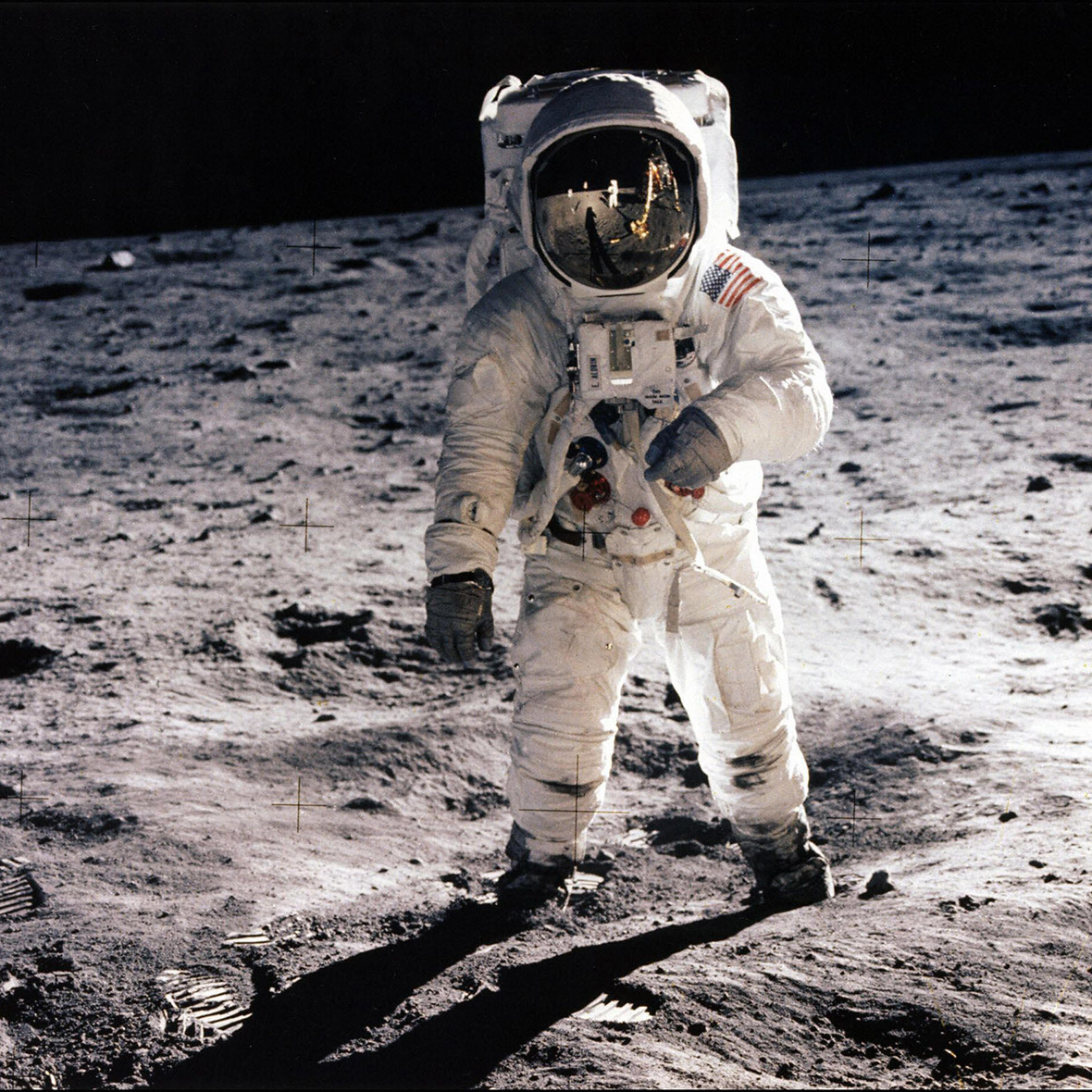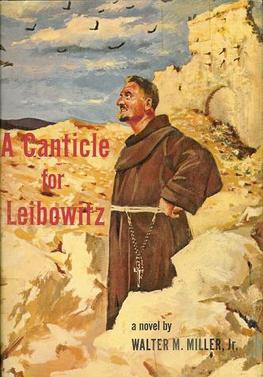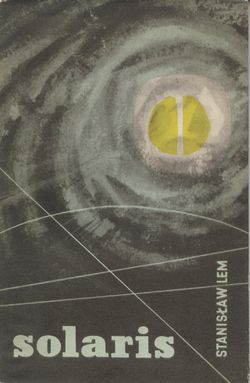
The 1960s were a turbulent time. That is probably an understatement. From what people read in their newspapers and saw on their television screens, it looked like the whole world was falling to pieces. In the United States, at least, the Vietnam war and the continuing Cold War were raging on the outside, and the anti-war movement and civil rights struggles on the inside. The world was plagued by a rash of assassinations, and nuclear war continued to be a constant threat.
However, in spite of all this chaos, the arts and sciences continued to thrive. The 1960s saw an unprecedented explosion of music and popular culture, some of the icons of which continue to be popular to this day.

Exciting developments in space exploration seemed to be occurring daily. In 1961, Yuri Gagarin, a Soviet cosmonaut, became the first human being to visit outer space. The first real “Voyage to the Moon” was taken by “The First Men in the Moon”, Neil Armstrong, Michael Collins, and Buzz Aldrin, in 1969.
Science fiction was slowly becoming reality, as the 1960s saw the introduction of The first working laser, industrial robot, geosynchronous communications satellite, and supercomputer.
Science Fiction:
Literature-

In the year 1960, Walter M. Miller Jr. published A Canticle for Leibowitz, a post apocalyptic story in the unique setting of a Catholic monastery. The novel follows Miller’s world thousands of years, as the earth rebuilds. The monks of the monastery preserve scientific knowledge until they believe the rest of the world is ready for it. A Canticle for Leibowitz is hailed as both a science fiction and literary classic.

The next year, Polish author Stanislaw Lem released Solaris, a philosophical tale of first contact that explores the limitations of the human race. As earth tries to make contact with a sentient planet, its people realize just how inadequate their methods of communication are for the task.
Dune, held to be one of the best-selling sci-fi novels ever written, was released by Frank Herbert in 1965. It is the epic tale of a young noble struggling to control an important planet under the feudal system. It was later continued in five sequels.
.jpg)
The next year, science fiction alumnus Robert Heinlein continued his illustrious career with The Moon is a Harsh Mistress. It presents a believable future history in which a lunar colony stages a revolt against Planet Earth. The Moon is a Harsh Mistress received the 1967 Hugo Award.

A new sci-fi and fantasy award was established in 1966- The Nebula Awards. Overseen by the Science Fiction and Fantasy Writers of America, it recognizes the best in American science fiction short stories, novellas, novelettes, and novels. The category of scripts and screenplays was added in 1974. The first novel award was given to Frank Herbert’s Dune, and the first short story award to Harlan Ellison’s “‘Repent Harlequin!’ Said the Ticktock Man”.

In 1968, Philip K. Dick published Do Androids Dream of Electric Sheep, a post apocalyptic classic about androids, which explores what it means to be human. Then again, what else would you explore in a novel about androids? Do Androids Dream of Electric Sheep served as the inspiration for the 1982 film, Blade Runner.
Magazines and Comics-

The science fiction magazine industry was in a period of change during the 1960s, with everything from titles to editors in flux. John W. Campbell changed the name of Astounding Science Fiction to Analog Science Fact and Fiction; Frederick Pohl took over as editor for Galaxy and If magazines; and Michael Moorcock was put in charge of New Worlds in Great Britain.
.jpg/revision/latest?cb=20100310031005)
The ‘60s also saw the rise of many of the great superhero teams we know today, including: The Justice League (1960), The Fantastic Four (1961), The X-Men (1963), The Avengers (1963), and The Teen Titans (1964).
Movies-
In 1960, George Pal, who had previously produced H.G. Wells’ War of the Worlds, directed and produced the film adaptation of The Time Machine. It starred Rod Taylor, as the Time Traveler, and served as an exciting and culturally relevant romp into Wells’ predicted future.
.jpg)
Planet of the Apes, directed by Franklin J. Schaffner, starring Charlton Heston, and written in part by Rod Serling, came out in 1968. It explored themes of evolution, social acceptability of ideas, time travel, suspended animation, and post-human life, and launched a franchise which has spanned 47 years of film and television history.
The same year, an unusual collaboration between author Arthur C.Clarke and director Stanley Kubrick resulted in a film and a novel, both entitled 2001: A Space Odyssey. The story is an evolutionary history of mankind that explores humanity’s ultimate end and place in the universe. The movie, though slow-paced, and slightly psychedelic at times, is remembered for its realistic science, and groundbreaking special effects, and is considered by some to be one of the best science fiction films of all times.
Television-
If the 1930s were the decade when sci-fi magazines became popular, and 1950s were the decade when sci-fi broke into the film industry, then the 1960s were the decade when science fiction television came into its own. With new widespread access to the medium, television became an important conveyor of news, popular culture, and stories.
Most of the science fiction on television in the 1950s was in the form of anthologies, such as The Twilight Zone, (which ran until 1964), or children’s shows. It was in the 1960s that high quality, science fiction serials came into the mainstream.

In 1963, the BBC released the first episodes of a quirky family time travel show starring William Hartnell as an enigmatic character called “The Doctor”, Carole Ann Ford as his granddaughter Susan, and William Russell and Jacqueline Hill as their schoolteacher companions. The very first episode, “An Unearthly Child”, was aired twice, as its original release date was November 23rd, the day after U.S. President John F. Kennedy was assassinated.
Over the fifty years since its inception, Doctor Who has grown from a quirky evening seriall, to a staple of British pop culture, to a worldwide phenomenon. The show’s longevity is due in part to the clever decision to write the inevitable change of lead actors into the lore. When William Hartnell’s failing health led to his leaving the show in 1966, the authors decided that the Doctor’s race, the Time Lords, could renew their physical forms when they became damaged to the point of death. So, William Hartnell was replaced with Patrick Troughton. Today, the Doctor is on his twelfth ‘regeneration’, played by Peter Capaldi.

In January of 1966, established comic book hero Batman appeared on the small screen with his sidekick Robin in the satirical, pop art serial, Batman. This campy, moralistic show was incredibly popular, and brought several superhero and Batman tropes into the mainstream, including visible sound effects (Bam! Pow! Whamo! etc) during fight sequences, and Robin’s constant use of exclamations such as “Holy Remote Control Robot, Batman!” (There is a list of all of them on Wikipedia. You should look it up. It will brighten your day.)
Alright, guys. I’ve made it.

Later that same year, On September 8th, 1966, the first episode of a certain technicolor space exploration series aired. The episode was called “The Man Trap”, and it starred William Shatner as Captain Kirk of the starship Enterprise, DeForest Kelley as the ship’s surgeon, and Leonard Nimoy, as the mysterious, pointy-eared first officer, Mr. Spock.
Star Trek, the creation of Gene Roddenberry, was a weekly exploration of themes about humanity through the bizarre and exciting adventures of the diverse, lovable crew of the U.S.S. Enterprise. It changed forever the way the general public saw science fiction, and inspired generations of scientists, doctors, engineers and astronauts, as well as writers, and artists.
What started out as a show that was barely able to stay on the air three seasons through fan campaigns has evolved over the past forty-nine years into a franchise consisting of six television series, ten movies (alright, fine, twelve), and numerous novel, comic book, and video game adaptations. Obviously, I have much more to say about Star Trek, and I have plans to say it next year, as I blog through The Original Series in honor of the show’s fiftieth anniversary.

The next year, 1967, saw the debut of an influential British spy science fiction show called The Prisoner. It starred Patrick McGoohan as a former secret agent trapped in a prison designed to look like a peaceful, (albeit slightly dystopian), village, and ran for 17 episodes.
Keep on glowing in the dark,
Elora




